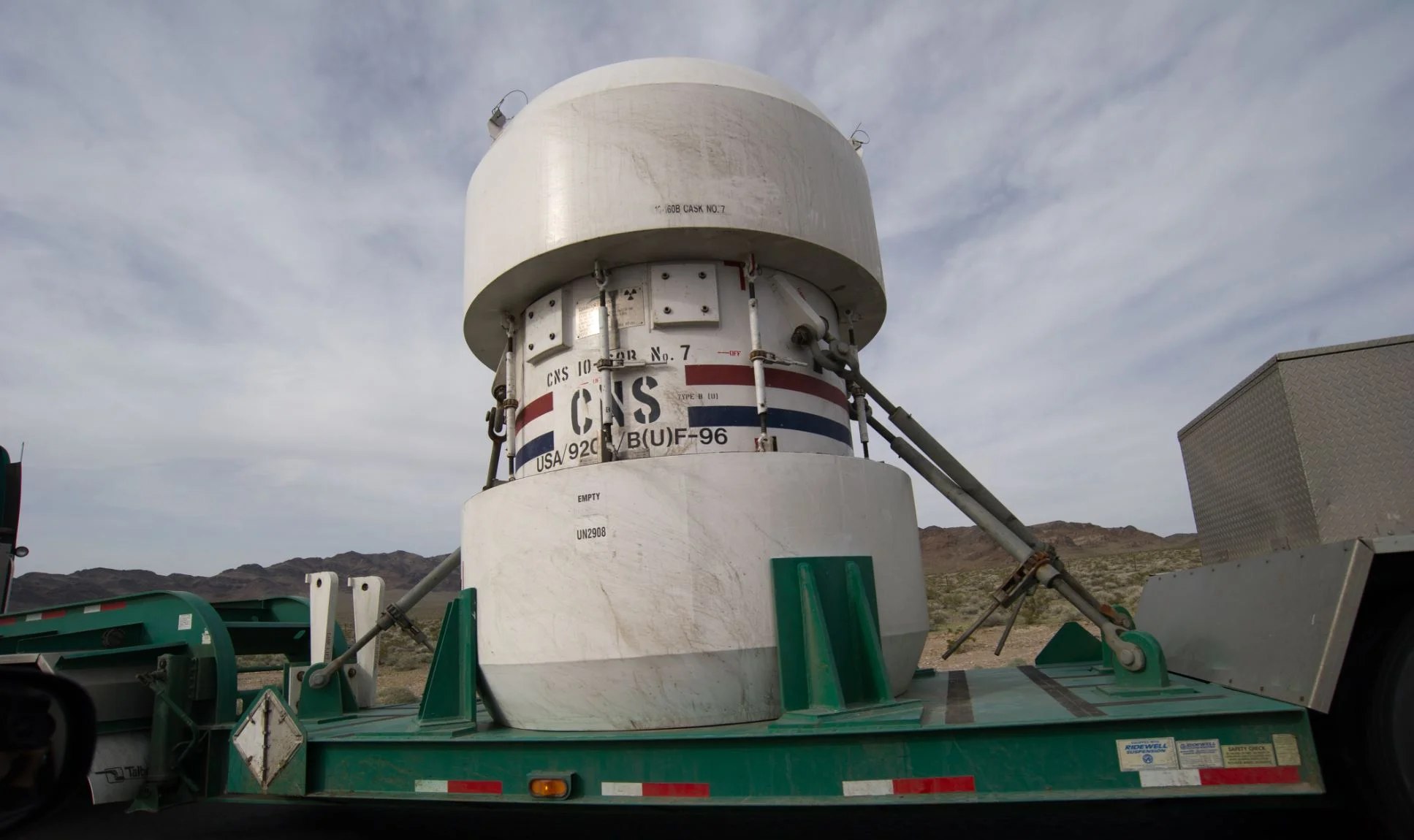Any comments, suggestions or just looking for a chat about this subject? Don't hesitate and leave a comment on our improved comment section down below the article!
By Mark Golden - Stanford University
Nuclear Waste Container - Image Credit: Bill Ebbesen via Wikimedia Commons
Thousands of tons of highly radioactive spent fuel are in temporary storage in 35 US states, with no permanent solution in the works. Experts now show how to end this status quo.
The United States government has worked for decades and spent tens of billions of dollars in search of a permanent resting place for the nation’s nuclear waste. Some 80,000 tons of highly radioactive spent fuel from commercial nuclear power plants and millions of gallons of high-level nuclear waste from defense programs sit in pools, dry casks, and large tanks at more than 75 sites throughout the country.
The new study recommends that the US reset its nuclear waste program by moving responsibility for commercially generated, used nuclear fuel away from the federal government and into the hands of an independent, nonprofit, utility-owned and -funded nuclear waste management organization.
“No single group, institution, or governmental organization is incentivized to find a solution,” says Rod Ewing, co-director of Stanford University’s Center for International Security and Cooperation and a professor of geological sciences.
The three-year study, which Ewing led, makes a series of recommendations focused on the back-end of the nuclear fuel cycle. The report came out last week.
Caught in a knot
Over the past four decades, the US nuclear waste program has suffered from continuing changes to the original Nuclear Waste Policy Act, a slow-to-develop and changing regulatory framework. Erratic funding, significant changes in policy with changing administrations, conflicting policies from Congress and the executive branch and—most important—inadequate public engagement have also blocked any progress.
“The US program is in an ever-tightening Gordian knot—the strands of which are technical, logistical, regulatory, legal, financial, social, and political—all caught in a web of agreements with states and communities, regulations, court rulings, and the congressional budgetary process,” the report says.
After describing the Sisyphean history of the US nuclear waste management and disposal program, the report makes recommendations all focused around a final goal: long-term disposal of highly radioactive waste in a mined, geologic repository.
Image Credit: catalania via Pixabay
“Most importantly, the United States has taken its eyes off the prize, that is, disposal of highly radioactive nuclear waste in a deep-mined geologic repository,” says Allison Macfarlane, a member of the steering committee and a professor of public policy and international affairs at George Washington University.
“Spent nuclear fuel stored above ground—either in pools or dry casks—is not a solution. These facilities will eventually degrade. And, if not monitored and cared for, they will contaminate our environment.”
Other Countries
The new, independent, utility-owned organization would control spent fuel from the time it leaves reactors until its final disposal in a geologic repository. This is not a new idea. Finland, Sweden, Switzerland, and Canada all have adopted a similar approach—and their nuclear waste management programs are moving forward. Finland expects to receive its first spent fuel at its geologic repository on the island of Olkiluoto in the mid-2020s.
“Initially, I was skeptical about placing utilities with nuclear power plants in control of the spent fuel from commercial reactors,” says Ewing. “But as we discussed the advantages of this cradle-to-grave approach, I was persuaded, particularly because this is the approach taken by other successful programs.”
Essential to the success of a new organization would be access to the Nuclear Waste Fund. Reassigning responsibility to a new organization—whether controlled by the federal government or nuclear utilities—would require an act of Congress. The report recommends that the Nuclear Waste Fund, more than $40 billion, be transferred to the new organization over several decades. If the new organization successfully develops a geologic repository, this repository could also handle highly radioactive defense waste.
“The status quo is a big liability for the future of nuclear power, an established source of carbon-free electricity,” says Sally Benson, co-director of Stanford’s Precourt Institute for Energy and a member of the report’s steering committee. “These recommendations will, I hope, break the gridlock in Washington and prompt concrete action to solve this problem.”
Source: Stanford University via Futurity
If you enjoy our selection of content please consider following Universal-Sci on social media:











